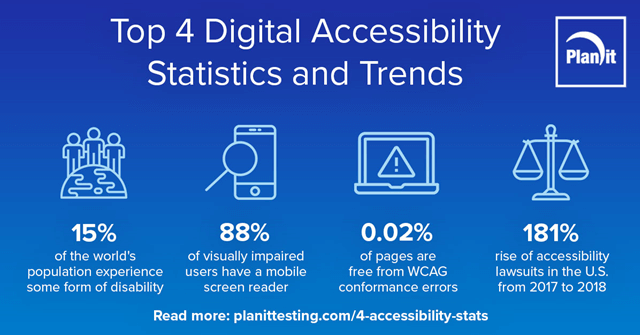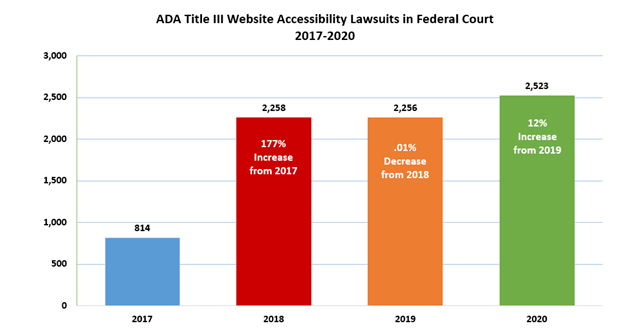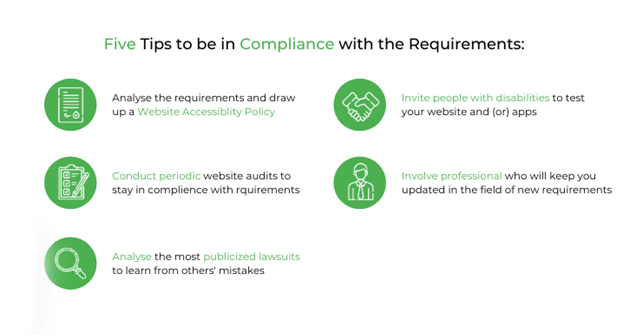
Cutting-Edge Marketing to Grow Your Business.

The results of the Court of Appeals for the Eleventh Circuit Gil v. Winn-Dixie case ruled that only a select subset of websites are required to conform to the regulations set by the ADA (Americans with Disabilities Act), such as those that create a barrier restricting access to goods and services to a public place. This decision overturned the original trial, which had found Winn Dixie guilty of violating ADA regulations.
The original case had ruled in favor of Juan Carlos Gil, a regular patron of Winn Dixie who required a screen reader when shopping online that was not supported by the Winn Dixie website. His lawyers argued that the inaccessible format of the Winn Dixie website prevented him from locating and refilling prescriptions, therefore violating ADA standards. However, in the retrial, the court found Winn Dixie exempt from ADA regulations, as the website is designed for “limited use” and is not a physical location.
This decision was described as a “sad but temporary loss for civil rights of people with disabilities.”
However, the Winn Dixie case is not the end of the discussion surrounding website accessibility. In fact, there is a startling number of lawsuits currently occurring at the federal level regarding the inclusivity of the internet. It is evident from both the frequency and number of cases that this topic is not just an isolated incident, but a dilemma that is becoming more and more of an issue in today’s internet-reliant society.
 Source: https://www.planittesting.com/nz/insights/2019/top-digital-accessibility-statistics-and-trends
Source: https://www.planittesting.com/nz/insights/2019/top-digital-accessibility-statistics-and-trends
While the law —at least in the case of the Winn Dixie lawsuit decision— currently rules in favor of the business, rather than with ability-impaired users, it is in all businesses' best interests to develop platforms and content that is more widely accessible to a greater number of customers and clients.
Some possible accommodations include adding optional audio recordings along with every written article or content or embedding additional information in images or memes. By making online platforms inaccessible, companies are at risk of alienating a significant portion of customers, as nearly 15% of the worlds population experience a disability.
In 2020, as in-person options for retail and sales decreased due to the COVID pandemic, the rate of website accessibility lawsuits has only continued to increase, with projections raising in 2021 as well. The internet is becoming an undeniable cornerstone for people all across the world in terms of communication, business, and entertainment, with no limit to usage in view.

Source: https://www.adatitleiii.com/
It is an ineffective business decision to lose clients due to inaccessibility issues. All companies should actively develop ways to improve their web accessibility. Continuous monitoring for potential issues, as well as inviting beta testers with disabilities to test web platforms, can help troubleshoot current accessibility issues and prevent potential points of inaccessibility going forward.

Source: https://www.jevera.software/post/why-is-website-accessibility-important
While the findings of the Gil v. Winn Dixie case might not favor customers requiring accessibility modifications, the increasing rate of lawsuits surrounding website accessibility proves the necessity for businesses to provide accommodations in order to serve a greater subset of clients. All businesses with any amount of online presence should strive to improve the design of their website, mobile apps, or social media platforms in order to increase customer satisfaction and reach a wider range of people.
Even if the courts rule against website accessibility, brands should strive to do better to serve all of their clientele.


Lorem Ipsum is a simple dummy text used as a dummy text contents. Lorem ipsum will be replaced. Lorem Ipsum is a simple dummy text used as a dummy text contents. Lorem ipsum will be replaced.Lorem Ipsum is a simple dummy text used as a dummy text contents. Lorem ipsum will be replaced.




